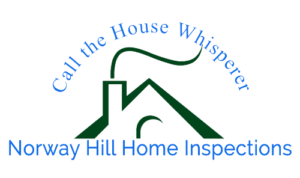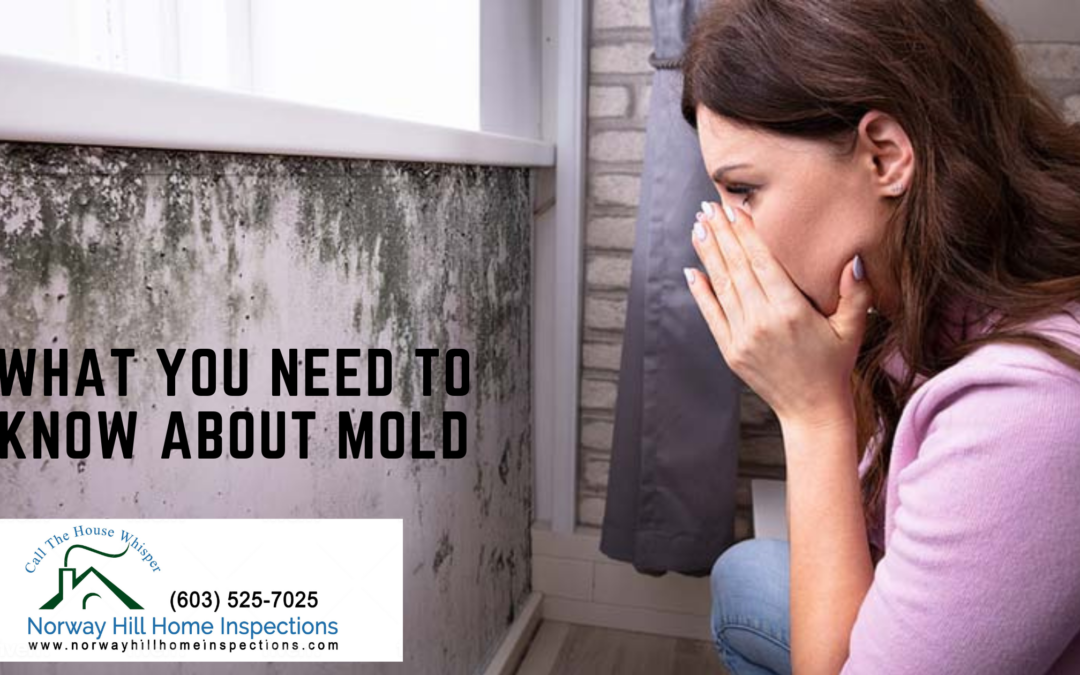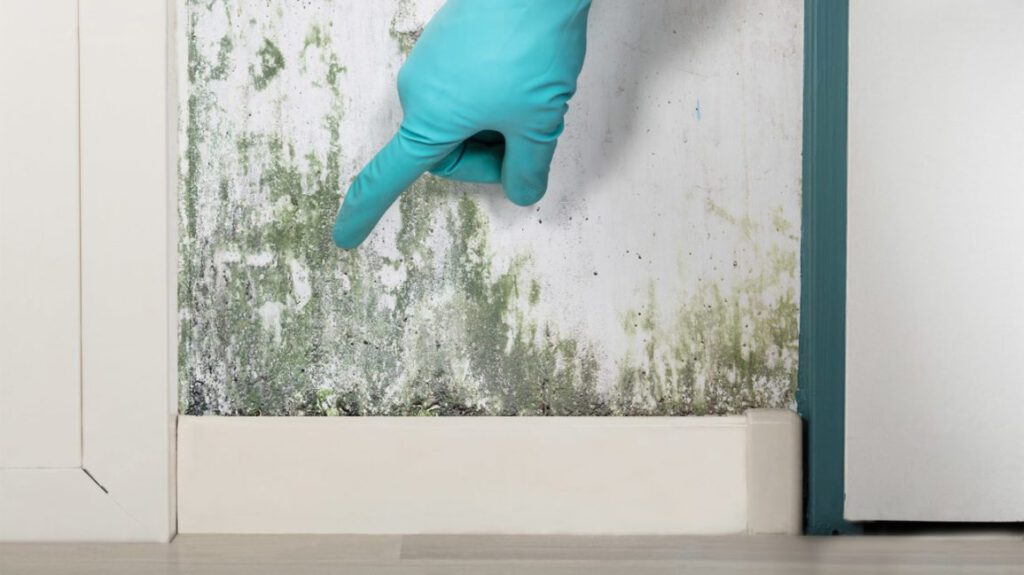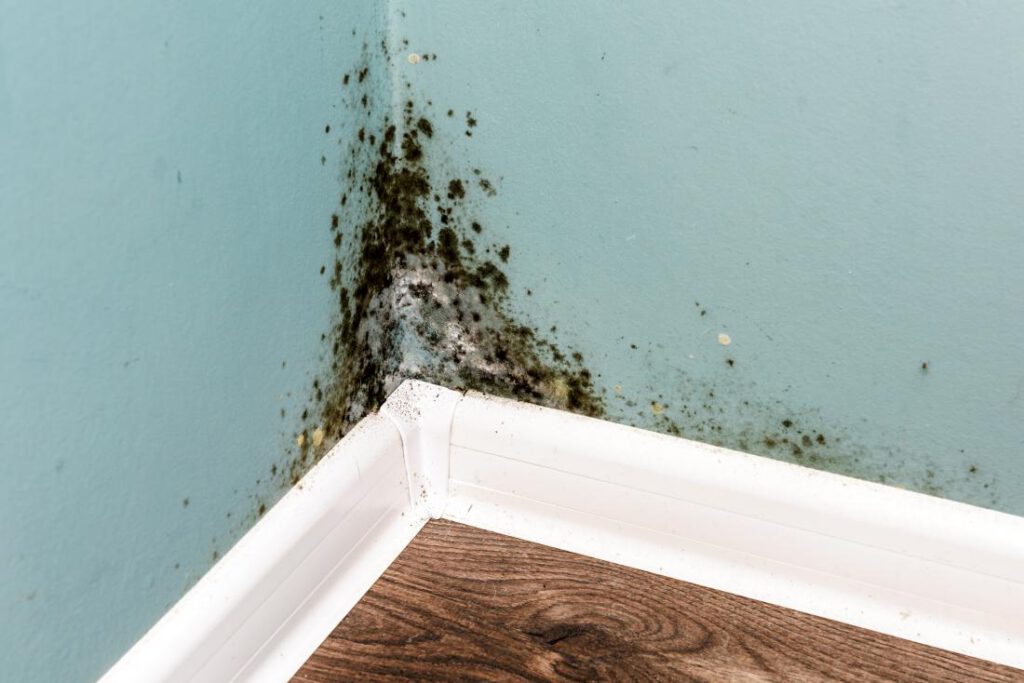Mold is a word that strikes fear into the heart of every homeowner. Whether it’s the presence of mold or merely the possibility of it, it can make people uneasy because mold can cause immense damage to a home, serious health issues, and can be expensive to remove.
So how do you know if your home or a home you are looking to purchase has mold?
How Common is Mold?
While mold is a natural part of an outdoor environment–helping to break down nature like leaves and dead trees–it can also occur naturally in the home, which is a much less natural environment.
Mold is fairly common to find in buildings and homes. Molds reproduce through tiny spores that are invisible to the naked eye. Mold can enter your home by floating through open doorways and windows, vents, or HVAC systems. Mold spores can also attach themselves to clothing, shoes, and pets to be carried indoors.
Once in the home, they float through the air and begin to grow into molds when they land on wet surfaces or in areas with high levels of moisture, like leaking roofs, windows, pipes, or basement walls. Mold grows best on paper and wood products, such as cardboard, ceiling tiles, wood joists, etc. It can also grow in dust, paints, wallpaper, insulation, drywall, carpet, fabric, upholstery.
There are many different types of mold, but none of them can grow without water or moisture.
How Does Mold Affect People?
Exposure to damp and moldy environments could cause a variety of health issues. Some people are more sensitive to mold than others, and for those who are sensitive, exposure to molds can lead to symptoms like stuffy nose, wheezing, red or itchy eyes, and skin. People who suffer from allergies to molds or asthma may have more intense reactions like fever or shortness of breath.
In 2004, the Institute of Medicine (IOM) found there was enough evidence to link indoor exposure to mold with upper respiratory tract symptoms, cough, and wheeze in otherwise healthy people; with asthma symptoms in people with asthma; and with hypersensitivity pneumonitis in individuals susceptible to that immune-mediated condition. And according to the Center for Disease Control and other more recent studies, a potential link of early mold exposure to the development of asthma in some children has been detected, particularly among children who may be more susceptible to asthma development.
How Do You Get Mold Out?
The first step to eradicating mold is to address the moisture issue. Whether you have a leak problem or a moisture/humidity problem, addressing that first will make the eradication of the mold easier because you know it won’t come back if there isn’t any wetness or moisture.
Once that problem has been fixed, remove moldy items from the area in question. Once mold has begun growing on carpet, insulation, ceiling tiles, or drywall, the only solution is to remove and replace it.
Make sure to properly clean and dry the area as well to ensure no future allergic reaction to parts of the dead mold and mold contamination that could still be lingering there.
When it comes to mold cleanup, the CDC recommends, “Clean up and dry out your home thoroughly and quickly (within 24-48 hours) after any flooding. Dig out mud and dirt. Use a wet vacuum to remove the remaining dirt. Scrub cleanable surfaces (such as wood, tile, stone) with soapy water and a bristle brush. Thoroughly clean all hard surfaces (such as flooring, molding, wood and metal furniture, countertops, and sinks) with water and dish detergent. Dry surfaces quickly and thoroughly after cleaning. If you have a fan, air conditioner or dehumidifier that wasn’t affected by flooding use it to help the surfaces dry after you finish cleaning.”
One common household cleaner that you can use for mold remediation is white vinegar. Many people think that bleach is the go-to in-home option for mold cleanup, but bleach isn’t as effective at cleaning up mold as white vinegar is. In fact, the mold can recognize the bleach as a threat, burrow further into the surface of its host, and reappear later. But the acidity of white vinegar kills mold entirely once it’s applied.
According to Family Handyman, here is how you use white vinegar to kill small segments of mold in your home:
“To safely and effectively clean a small area of mold, ServiceMaster advises the following:
- Add full-strength white distilled vinegar to a spray bottle and spray it on the mold.
- Let it sit for at least an hour before wiping away mold.
- If you need follow-up scrubbing, combine one teaspoon of baking soda with two cups of water. Pour it into a spray bottle, shake and spray it onto the mold. Scrub with a brush or scouring pad.
- Rinse with warm water, then spray again with the vinegar and let it dry.
To protect yourself from mold and its spores, wear gloves, a mask and goggles. Gloves also prevent any skin irritation from the vinegar…Because of vinegar’s acidity, it can damage some surfaces. We don’t recommended using vinegar on natural stone, waxed wood, cast iron or aluminum.”
Consider contacting a professional mold cleaner if you have an extensive amount of mold and you do not think you can manage the cleanup on your own.
How Do You Keep Mold Out?
You can prevent mold from growing in your home by keeping an eye on a few key things:
- As part of routine maintenance, do a check around the exterior of your home for evidence of water damage or visible mold, and correct any conditions that could cause mold growth (water leaks, compensation, flooding, etc.).
- Inside your home, you can control and prevent mold growth by doing a number of things: 1) you can control humidity levels and make sure they stay between 30%-50%, 2) promptly fix leaky roofs, windows, and pipes, 3) thoroughly clean and dry your home after flooding, 4) make sure shower, laundry, and cooking areas are properly ventilated, 5) use a dehumidifier during the humid months in the areas of your home that tend to become more humid, 6) consider not using carpeting in areas like bathrooms or basements that could have a lot of moisture.
Get a Mold Inspection
If you are still unsure if your home or a home you are looking to purchase has mold growing in it, then consider getting a mold inspection from a Certified Master Home Inspector. Let a professional help you assess whether there is a mold problem in your home and eliminate any uncertainty about the subject. Call today and we can get an inspection scheduled for you right away!



